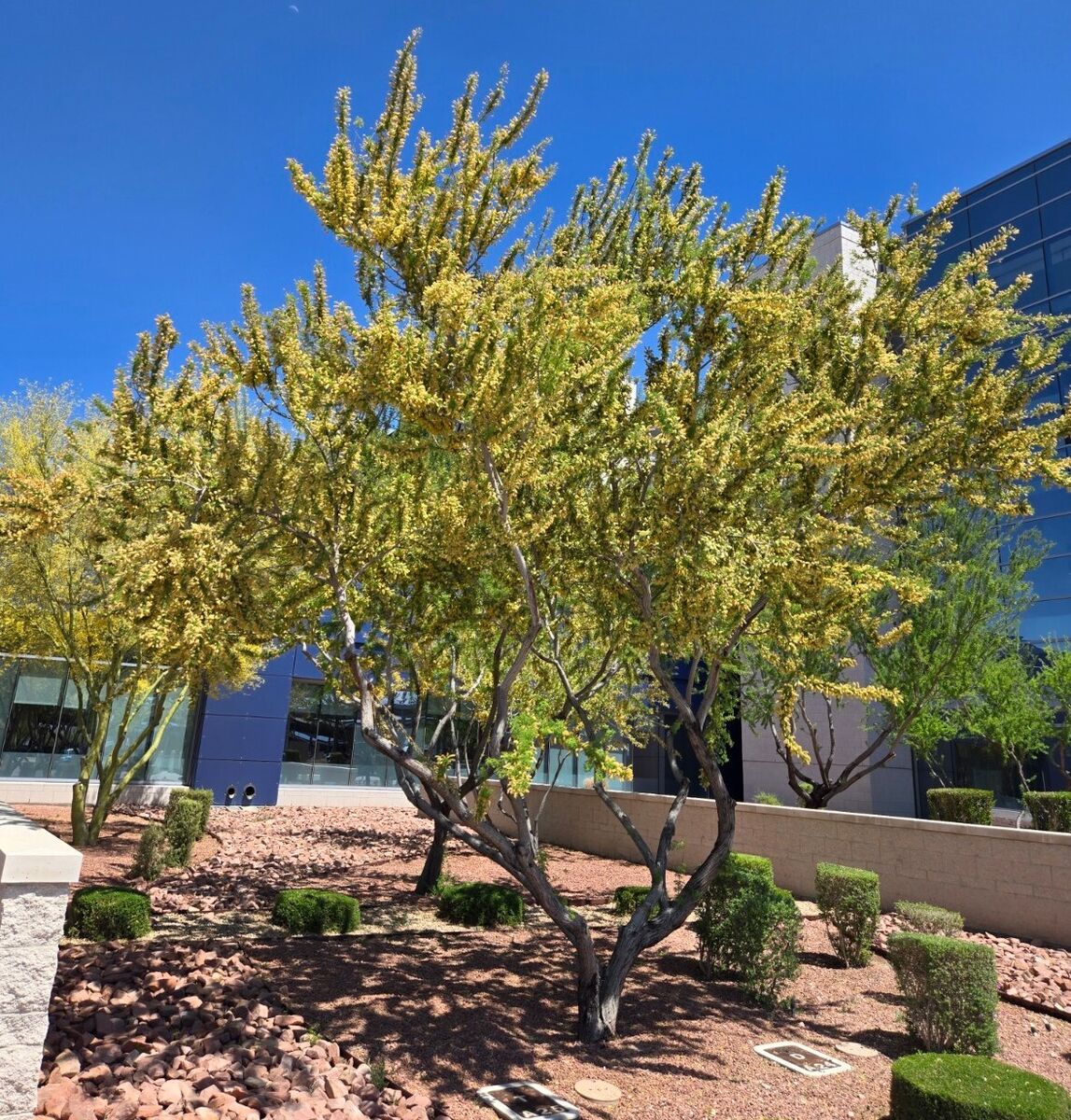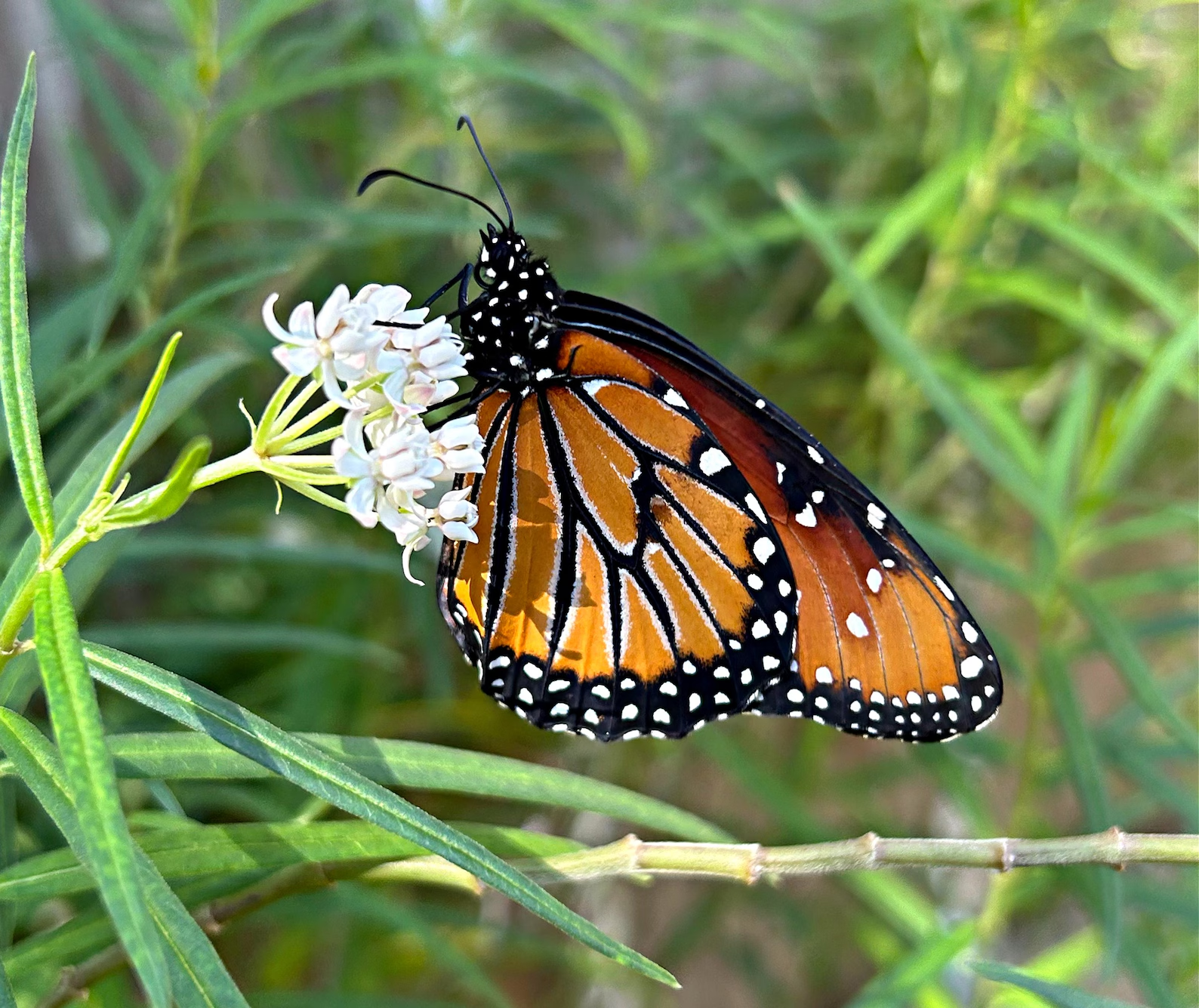The catclaw acacia, with its formidable thorns and dense, interwoven branches, is a master of defense and survival in the harsh desert environment. Its adaptations for creating protective thickets, providing shade, and conserving water offer valuable insights for creating secure and comfortable desert homes.
- The catclaw acacia's sharp, recurved thorns and dense, interwoven branches create impenetrable thickets, providing natural defense and security.
- Architectural Application:
- We can design homes with defensive boundaries that mimic the catclaw acacia's thickets. Layered landscaping with thorny xeriscape plants, such as catclaw acacia, ocotillo, and cholla, can create a natural defensive perimeter.
- Incorporate security features, such as strategically placed walls, fences, or trellises with thorny vines, that enhance privacy and deter intruders.
- Design courtyards and patios with dense, interwoven trellises or screens that provide shade and security.
- Example:
- A home could feature a layered landscape with a mix of thorny xeriscape plants, creating a natural defensive perimeter. Strategically placed walls and fences could enhance privacy and security. Courtyards and patios could be enclosed by dense, interwoven trellises covered with thorny bougainvillea vines.
2. Dense Branches and Shaded Enclaves:
- The catclaw acacia's dense, interwoven branches create shaded enclaves, providing relief from the intense desert sun.
- Architectural Application:
- We can design homes with shaded outdoor spaces that mimic the catclaw acacia's enclaves. Cantilevered roofs, pergolas, and trellises can create shaded patios and courtyards.
- Incorporate dense, interwoven shading systems that filter sunlight and create dappled shade.
- Design courtyards and patios with strategically placed trees or shrubs that provide shade and create comfortable microclimates.
- Example:
- A home could feature a cantilevered roof that provides shade for a large patio. Pergolas and trellises covered with climbing vines could create shaded outdoor spaces. Courtyards and patios could be planted with strategically placed desert willow and mesquite trees.
3. Water Conservation and Root System:
- The catclaw acacia's deep root system allows it to access groundwater, while its small leaves minimize water loss.
- Architectural Application:
- We can design homes with efficient water management systems, including rainwater harvesting, greywater recycling, and drought-tolerant landscaping.
- Incorporate permeable paving and drainage systems to manage stormwater runoff.
- Design landscapes with swales and rain gardens to capture and filter rainwater.
- Example:
- A home could feature a rainwater harvesting system that channels runoff from the roof into underground cisterns. Permeable paving and rain gardens could be used to manage stormwater runoff and replenish groundwater. The landscape could be planted with drought-tolerant native plants, minimizing irrigation needs.
4. Adaptability and Resilience:
- The catclaw acacia's ability to thrive in harsh conditions makes it a resilient and adaptable species.
- Architectural Application:
- We can design homes with flexible and adaptable spaces that can be easily modified to meet changing needs.
- Use locally sourced and durable materials that are well-suited to the desert environment.
- Design for passive heating and cooling, to minimize reliance on mechanical systems.
- Example:
- A home could feature modular interior walls that can be easily reconfigured. The home could be constructed from locally sourced rammed earth, providing thermal mass and durability. Passive solar design strategies could minimize the need for air conditioning.
5. Habitat Creation and Biodiversity:
- The catclaw acacia provides habitat for a variety of desert animals, including birds, insects, and mammals.
- Architectural Application:
- We can design homes with features that attract and support wildlife, such as bird feeders, water features, and shelter areas.
- Incorporate native desert plants into the landscape, providing food and habitat for local animals.
- Design green roofs and living walls that create habitats for pollinators and other beneficial insects.
- Example:
- A home could feature bird feeders and water features that attract a variety of desert birds. Native desert plants, such as milkweed and agave, could provide food and habitat for local animals. A green roof planted with wildflowers could attract pollinators.
- A home could feature bird feeders and water features that attract a variety of desert birds. Native desert plants, such as milkweed and agave, could provide food and habitat for local animals. A green roof planted with wildflowers could attract pollinators.
Conclusion:
By studying the catclaw acacia, we can design desert homes that are not only comfortable but also secure, resilient, and ecologically sound. Its adaptations for defensive thickets, shaded enclaves, water conservation, adaptability, and habitat creation offer valuable lessons for creating dwellings that thrive in the arid landscape. By embracing biomimicry, we can build homes that are both functional and beautiful, reflecting the wisdom of the desert ecosystem and creating harmonious living spaces.




Leave a Comment